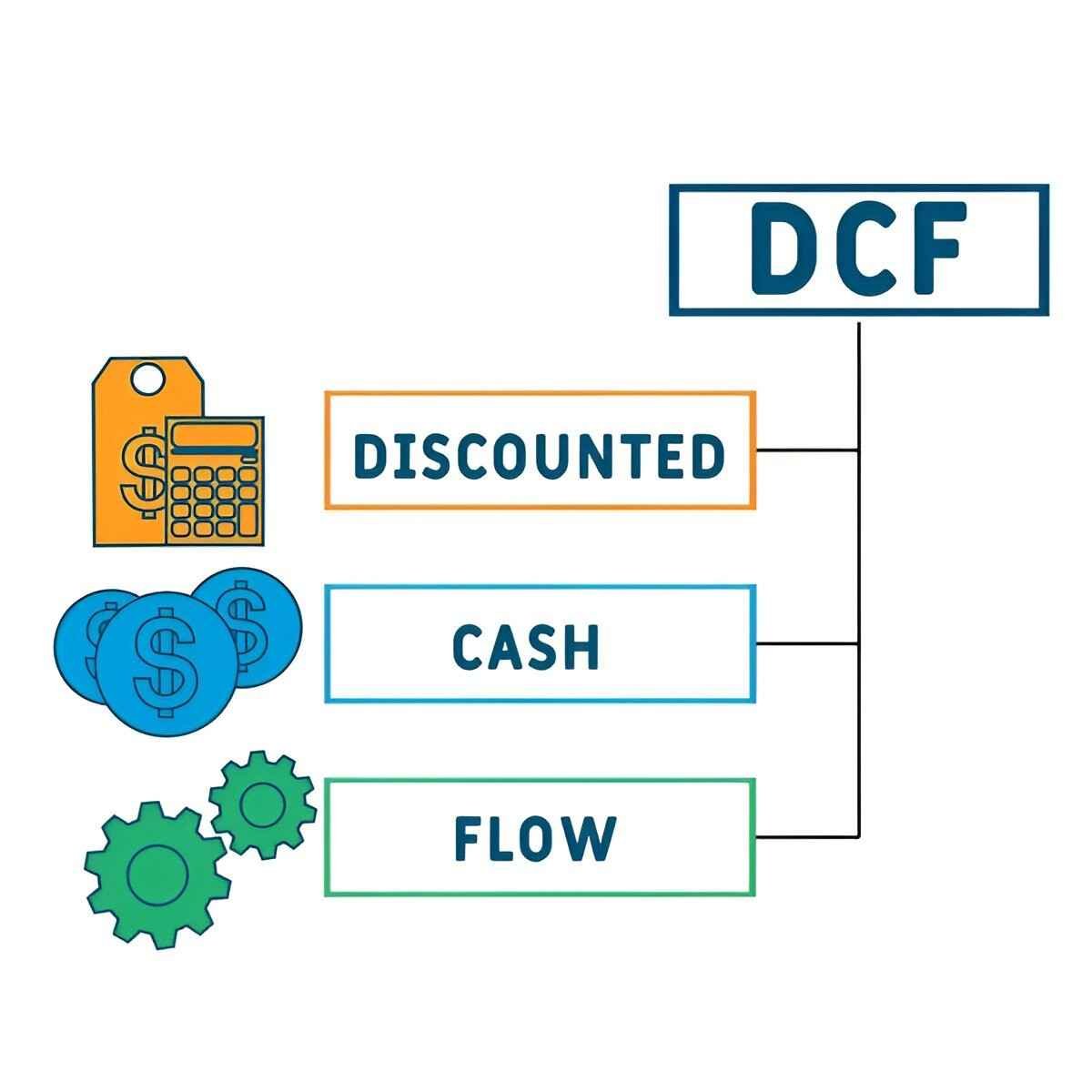Discounted Cash Flow (DCF) analysis is a method used in finance to estimate the value of an investment based on its expected future cash flows. It is a valuation technique that calculates the present value of projected future cash inflows and outflows discounted back to the present using a specified discount rate. DCF analysis is widely used in investment valuation, capital budgeting decisions, and business valuation.
Table of Contents
How Discounted Cash Flow Works
Time Value of Money: DCF analysis is grounded in the concept of the time value of money, which asserts that a dollar today is worth more than a dollar in the future due to its potential earning capacity if invested.
Discount Rate: The discount rate used in DCF represents the minimum rate of return required by investors or the cost of capital for the investment. It reflects the risk associated with the investment and the opportunity cost of deploying capital elsewhere.
Steps in DCF Analysis:
- Forecast Future Cash Flows: Estimate the future cash flows expected from the investment over a defined period.
- Apply Discount Rate: Determine an appropriate discount rate based on the risk profile of the investment.
- Discount Cash Flows: Discount each projected cash flow back to its present value using the discount rate.
- Calculate Present Value: Sum up the discounted cash flows to obtain the present value of the investment.
Key Points about DCF Analysis
- Objective: The primary goal of DCF analysis is to determine whether an investment is undervalued or overvalued based on its expected future cash flows relative to its current price.
- Net Present Value (NPV): NPV, a common metric derived from DCF analysis, compares the present value of cash inflows to the initial investment. A positive NPV indicates a potentially profitable investment, while a negative NPV suggests the investment may not meet the required rate of return.
- Sensitivity Analysis: DCF analysis allows for sensitivity testing by adjusting key variables such as growth rates, discount rates, and terminal values to assess the impact on the investment’s valuation.
Calculation Example
Scenario: Consider a project that requires an initial investment of $100,000 and is expected to generate cash flows of $30,000 annually for the next five years. If the discount rate is 10%, what is the present value of the project?
Calculation:
- Future Cash Flows: $30,000 per year for five years.
- Discount Rate: 10% annually.
- Therefore, the present value of the project’s cash flows, discounted at 10%, is approximately $113,675.
Practical Applications of DCF Analysis
- Valuation of Investments: DCF is commonly used to value stocks, bonds, real estate investments, and business acquisitions by estimating their intrinsic value based on expected future cash flows.
- Capital Budgeting: Businesses use DCF to evaluate and prioritize capital expenditures and long-term projects by comparing the present value of expected returns against initial investment costs.
- Mergers and Acquisitions: DCF analysis helps determine the fair value of companies during merger negotiations or acquisitions, guiding decision-makers on whether to proceed with the transaction.
Considerations and Challenges
- Estimation Accuracy: DCF analysis relies heavily on accurate forecasts of future cash flows and assumptions about discount rates, which can be challenging to predict, especially for long-term investments.
- Risk and Uncertainty: Changes in economic conditions, market dynamics, or business risks can significantly impact the outcomes of DCF analysis.
- Alternative Valuation Methods: While widely used, DCF analysis may be complemented by other valuation methods such as comparables analysis or asset-based valuation to provide a comprehensive assessment.
Conclusion
In conclusion, Discounted Cash Flow (DCF) analysis is a fundamental tool in finance for estimating the value of investments based on their expected future cash flows. By discounting projected cash flows back to their present value using a specified discount rate, DCF analysis helps investors and businesses make informed decisions about allocating capital, evaluating investment opportunities, and determining the fair value of assets. Mastery of DCF principles allows stakeholders to navigate complex financial decisions with greater clarity and confidence, ensuring resources are deployed efficiently and in line with strategic objectives.





